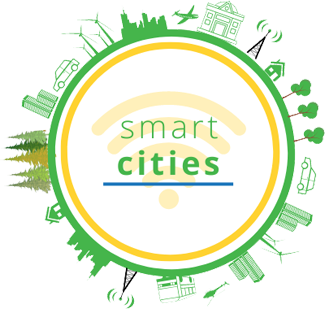Tools & Services
Empowering Success, Unlocking Potential: Tools & Services for a Transformative Journey

01.
- Sustainable and green urban mobility
There is a need for substantial changes in a city’s transport system in order to achieve the transition to more sustainable and green urban mobility to reduce urban road congestion, direct emissions, noise pollution as well as to improve accessibility. Road transport is one of the key factors for a city’s economic development, yet the exploitation of fossil fuels for mobility purposes makes it responsible for a quarter of the EU’s carbon dioxide emissions. Electrification of transport is the alternative to conventional vehicles with an internal combustion engine, which is considered a key strategic objective at EU and national level. In Greece, the national energy and climate strategy mandates the phase-out of vehicles with internal combustion engines by 2030 and promotes the concept of electrification through a series of (financial) incentives.
Electrification of transport can only be a success story if a suitable public charging network is developed at city (and intra-city) level.
In this direction, cities are expected to play a key role either by coordinating the development of the public charging network through private initiatives or by developing and managing their own charging network (e.g. the city of Barcelona operates one of the most advanced public charging networks in Europe) .
- Interoperable platform for monitoring and managing the public charging network
- Intelligent real-time parking monitoring and management system
- Overview of tariff systems and incentives to promote and facilitate urban electrification
- Documenting accessibility requirements for the sustainable development of public charging infrastructure
- Accelerating the adoption of CCAM solutions for delivery services in the modern smart city
- Facilitating the concept of clean micromobility sharing in the city context
02.
- Liveable areas and the built environment
Zero emissions and green energy positive buildings are the main challenges to be addressed in the framework of the “sustainable areas and built environment” strategy.
The aim is to reduce energy costs and the carbon footprint of buildings by increasing energy efficiency and self-consumption. In this direction, a set of tools and actions that go beyond traditional practices can be proposed.
A key requirement for the sustainability and energy efficiency of buildings is the modeling of the building’s heating/cooling and consumption behavior through digital tools (Building Information Modeling – BIM) in combination with field data measurements regarding local environmental conditions (e.g. temperature, humidity), occupancy and energy profile.
In addition, increasing circularity in the (re)use of building materials on construction sites is an important step towards reducing the sector’s CO2 footprint in the 2050 timeframe, as targeted by the European Energy Performance of Buildings Directive (EPBD).
Innovative shading mechanisms, including solar panels with integrated photovoltaic panels (mesh shading material or thin film photovoltaics) that generate energy can significantly improve the thermal inertia of the building and therefore its energy efficiency.
Finally, the energy management system plays a key role in the management of buildings/areas characterized by diverse technological energy tools with different intrinsic properties (ie dynamic response, network impact, etc.). The design and development of a holistic energy management system that enables cross-sectoral applications (e.g. heating/cooling system, electric vehicles, PV, battery storage, etc.) at the building/area level is one of the key outcomes of this project.
Specifically, the SmartCities project aspires to offer:
- Design framework for intelligent energy management systems for public buildings and schools
- Framework for energy management service planning towards positive energy areas
03.
- Integrated infrastructure and processes
The main challenge to be addressed for the implementation of smart cities is the accessibility of data at different levels in the smart city ecosystem and without compromising data security and privacy.
The SmartCities project in this direction will focus on the field of electric mobility, designing solutions that will facilitate the development and promotion of electric vehicles.
The development of a public charging network is critical as it reduces the range stress of EV users and facilitates the charging process in areas where private charging can take place, mainly due to a lack of private parking spaces.
The development of a public charging network can follow different business models (private investment, public investment or a combination). In some cases, cities take the initiative to develop and manage their city’s public charging network (eg Barcelona, Grenoble, etc.). For this purpose, a monitoring and management tool is required in combination with electric mobility services to facilitate the accessibility and exploitation of charging infrastructures.
Specifically, the SmartCities project aspires to offer:
- Electric mobility platform to monitor and manage charging infrastructure
- Reservation service to improve the accessibility of the charging network
- Activation and involvement of citizens in the context of smart cities
Ready to learn more about SMARTCITIES project?
Delve into the core components of our project for a comprehensive overview of its key aspects,
progress, and outcomes

Project Structure

Work Units

Tools & Services

Deliverables








